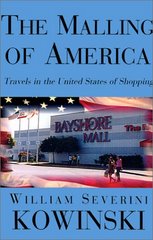The next big Cascadia quake will result in tsunamis. "A magnitude 9 event does not respect political boundaries," Dengler said. "It will impact the entire Pacific Ocean."
The first waves of the tsunami will reach San Francisco in an hour. In two hours it will hit Santa Barbara, in three hours northern Canada, and in five hours, Hawaii. Nine hours later, it reaches Japan. "Japan is going to get damage from our next Cascadia earthquake, as it did in 1700."
On the screen behind her was one of the color-coded North Coast tsunami maps, of the Humboldt Bay area. Dengler described the projected problem areas, which included all margins of the Bay. Indian Island would be flooded, as well as some of the Eureka waterfront. "But the vast majority of Eureka is not at risk." Elevation as well as distance from the coast is a factor, so even in Samoa the high dunes are likely to be safe.
To see these North Coast tsunami maps now, click here.
Dengler then talked about preparation. Referring to the Indian Ocean tsunami she said, "Many people died needlessly, of ignorance, because they did not understand nature's warning." Some of those in the quake area did not realize what the shaking could portend, and those farther away didn't understand that the sudden disappearance of waves and water from the beach was a warning.
Because the North Coast is so close to the area where the tsunami will be generated, "the earthquake is your warning," Dengler said. "You have time to do something. First, protect yourself from the earthquake. If you're inside, duck, cover and hold. If you are inland, move to higher ground. Go on foot because the roads aren't going to be passable. Stay away from the coast for a really long time, until you have some kind of official notification that its safe to go back. We may be talking about days. The period of unusual wave activity may be 12 hours. The radio is your best source of information. In particular, get yourself a NOAA weather radio."
After these presentations, the lights came up and audience members asked questions. The geologists talked about the complexities of the effects on the landscape of a big Cascadia quake, and about the effects of past quakes, such as the 1700 earthquake which enlarged Humboldt Bay to its present size. "In the journals of the Josiah Gregg party, they noted in conversations with the Wiyot, their story was that the bay was created in a single day in an earthquake. If you imagine a marshy swampy bay that suddenly dropped down on the order of a meter it would certainly look like it was created in a single day."
There were several questions seeking more information on the North Coast tsunami. How high would the waves be? "What we've seen in a great tsunami here is an average height of 40 to 45 feet, with isolated instances of 75 to 100 feet. But we have no evidence on our coast of tsunami waves of 100 feet. So if you get yourself above a hundred feet on the open coast, you'll be okay."
Tsunamis are a series of waves. Because of the effects waves have on each other, "the first wave is never the biggest. It's always the second or third or fourth or the fifth." The bigger the tsunami, the longer the peri0od of wave activity. The Indian Ocean tsunami lasted 8 to 10 hours.
In correspondence later, Lori Dengler clarified aspects of the North Coast tsunami maps. "A Cascadia earthquake will likely isolate McKinleyville from Arcata, Aracat from Eureka, Ferndale, Fortuna, etc. Every major bridge is likely to be unpassable in the first few days due to differential settling from the ground shaking. The isolation has nothing to do with the tsunami -it's caused by the ground shaking. The current State bridge retrofit program has already completed the strengthening of many of our bridges and hopefully most will still be structurally sound. If this is the case the bridges might be made passable again relatively quickly. If there is structural damage, it could be months before the bridges work."
"Bridges aren't the only problem. Liquefaction will cause damage to roadways in the vicinity of the bay and rivers. The airport will be ok as long as the McKinleyville fault that runs beneath it doesn't rupture in the earthquake. If it does, the airport will be out of commission indefinitely. Helicopters will be very important in the response and relief periods."
Standing Together in Minnesota
-
I have many fond memories of my visits to Minnesota and its Twin Cities.
Once I was there for a week or so during the winter. From observation and
my...
5 hours ago








No comments:
Post a Comment